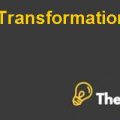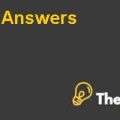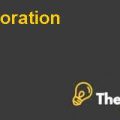Elise Smart Case Study Solution
Rating Based on Above Factors
Based on the above factors, it is concluded that the goal on which Darlene’s performance was assessed was unachievable by her as she did not have the experience of performing such large scale and complex task, Darleen was not motivated to achieve it as she had interest in providing technical knowledge to the end users, she had the technical skills but her work behavior and attitude was casual. Even though, she faced problems in managing balance between work and personal life, she could have communicated these problems to Smart instead of neglecting the tasks knowing that the task was crucial for organization’s growth. Therefore, a rating of Need Improvement should be given to Darlene based on these factors.
Subsequent Effect of Low rating on Darlene’s Performance
Since the task assigned to her was complex considering her experience and background, her subsequent performance might be affected as she might feel demotivated due to the fact that her performance was being assessed on unfair grounds. Also, due to low performance rating, she is likely to lose her annual bonus and salary increment which will further affect her trust in the employer as she must be expecting pay rise as her expenses have increased now that she is married.
Alternate Performance Appraisal Techniques
The following performance appraisal theories are suggested to ensure fair performance evaluation of all the employees of the organization.
SMART Theory
As per this theory the goals on which employee’s performance is assessed, should be Specific, measurable, attainable, relevant and time bounded. This theory ensures that employee’s performance is assessed on fair grounds. (Herridge, 2019)
Specific: The goals set to evaluate performance employees should not be too generic and should relate to the employees’ experience and field. The goal on which Darlene’s performance was assessed was not specific as no details were provided by Smart regarding how to achieve it or how to evaluate the merger of two units. Darlene’s performance should be evaluated on the basis of reduction in number of complaints by customers.
Measurable: The goal should be set considering whether it can be measured in financial terms or not. The goal of merger of two units could be measured by the cost savings resulted by closure of one business unit whereas the goal of reduction in customer complaints can be measured by customer survey or variance between this month’s and last month’s customer complaints.
Attainable: While setting goal, it should be considered whether the goal is achievable or not, as unrealistic targets will only cause stress to the employees which was the case with Darlene. The goal of reduction in number complaints can be achieved by providing knowledge to maximum number of customers by providing information cards providing description of each PC and software and instructions regarding how to operate it.
Relevant: The goal should be relevant to the organization’s overall mission and it should relate to the responsibility of employees who is held accountable for the task.The task of evaluating merger of business units was not relevant for Darleen as he was only responsible for handling calls related to PC support enquiries. The goal of reduction in number of complaints is relevant to his department and responsibilities.
Time bounded:The duration in which the target has to be achieved should be specified. It should also be considered whether the whole organization is committed to monitor the target’s progress as per its timeline. One of the reason of negligence by Darlene was that no limit was specified by Smart to perform the target. The achievement of reduction in customer complaints can be given a deadline of twelve months.
The Expectancy Theory
This theory states that effort, performance and motivation are interlinked with each other. In order to increase the performance of an employee, he should be motivated enough to achieve the target. Therefore, as per this theory following factors should be considered in order to increase employee’s motivation and for setting goals.
Expectancy: The employees have different expectations and different confidence levels regarding their capabilities of performing a task. Therefore, the employer should identify what resources, supervision and trainings the employees will need in completion of the given task. Despite the fact that Darlene had no experience of performing large scale tasks and was not capable to perform it alone, no resources or guidance was provided by Smart.
Instrumentality: The employees have to be assured that the employers will provide the promised rewards after they perform the task or achieve the goals. Employees will not be motivated to perform the tasks if the employers fail to fulfill their promises. Although pay increment and annual bonus, Darlene was still not motivated to achieve the task.
Valence: This refers to the emotional placement people share with the desired outcomes. The organization needs to discover whether employees will be motivated by intrinsic rewards or extrinsic rewards. It might be possible that Darlene wanted intrinsic rewards like employee of the year award, but Smart was offering extrinsic rewards.
Decision Matrix
The following decision matrix provides recommendation to Elise Smart regarding which theory will be suitable for the organization to evaluate its employee’s performance. The options discussed under the decision matrix are rated on the scale of 5.
| Options to Assess Employee Performance | Time | Money | HR | Complexity | Score |
| Current Performance Criteria | 1 | 1 | 1 | 2 | 5 |
| SMART Theory | 3 | 2 | 2 | 3 | 10 |
| The Expectancy Theory | 5 | 3 | 4 | 5 | 17 |
The option to use the current method of performance evaluation requires less time as compared to other two methods of performance appraisal as Smart assigns the credit rating, discuss it with the appraisee and then submit the performance report to Cheng, the vice president of the company.Low scores are given to current appraisal method as process is simple, short, less money is required and only one person is responsible for appraisal.
The other two methods are quite complex and lengthy as more people will be involved in performance appraisal, achievement of objectives will be monitored on time to time basis and a lot of time will be needed for setting objectives. Performance appraisal using the expectancy theory will take more time as compared to other methods as different objectives and different rewards will need to be set and offered for each employee.
Based on the above scores, it is recommended that performance criteria should be based on the factors of the expectancy theory. The reward choice should be based on the employee’s desire whereas objectives should be set considering the abilities of employees.................
This is just a sample partical work. Please place the order on the website to get your own originally done case solution.











